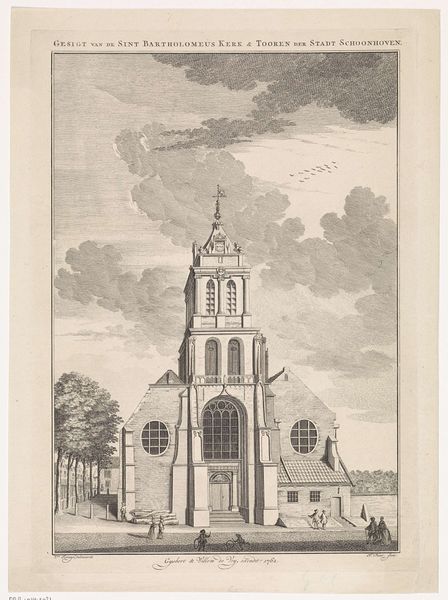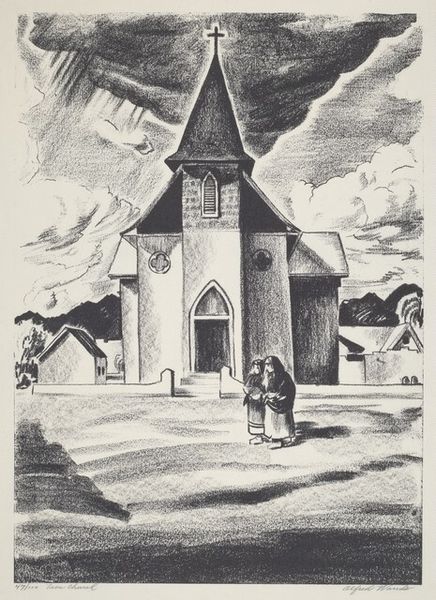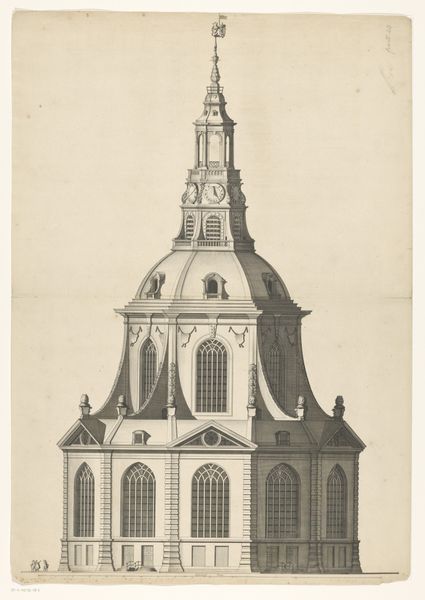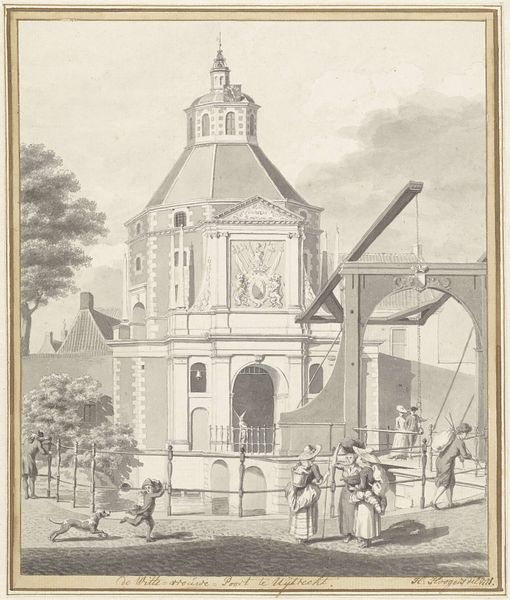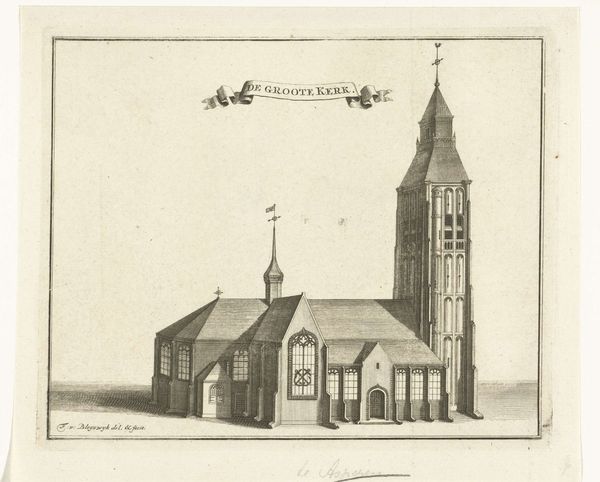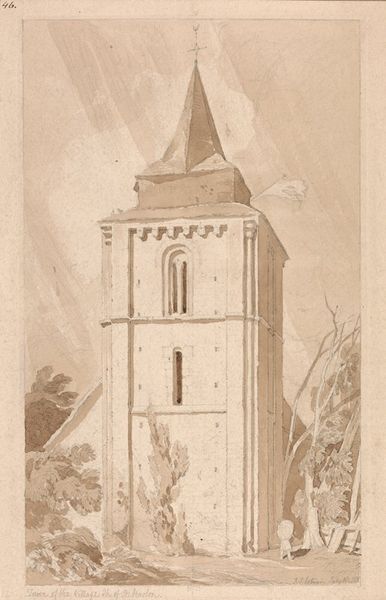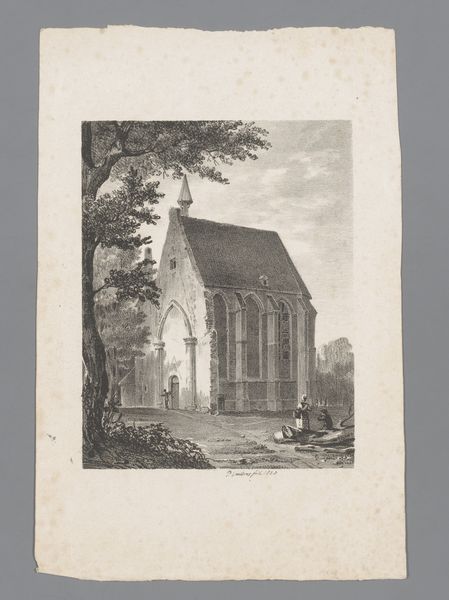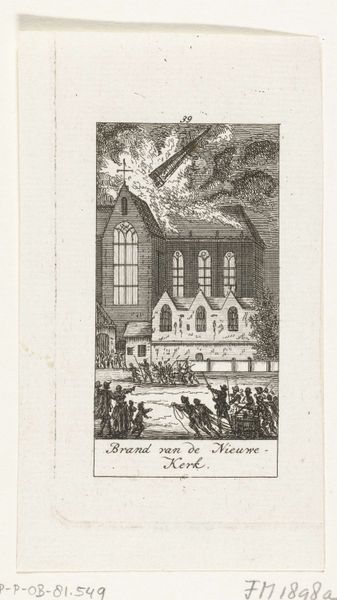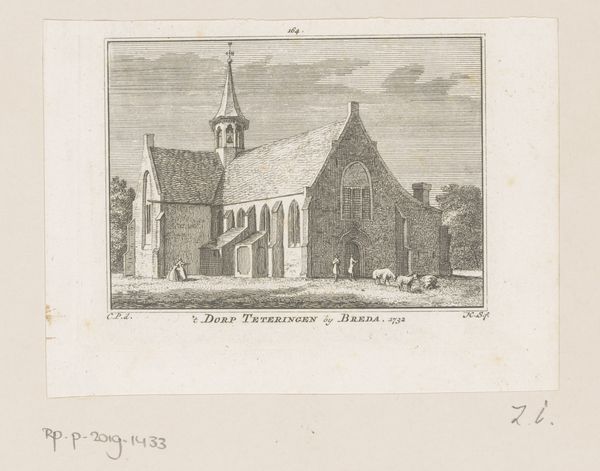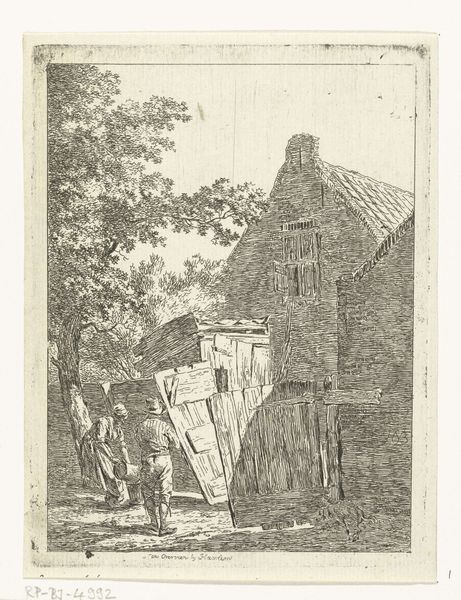
print, etching, engraving, architecture
#
portrait
#
neoclacissism
#
narrative-art
# print
#
etching
#
old engraving style
#
cityscape
#
history-painting
#
engraving
#
architecture
Dimensions: height 171 mm, width 115 mm
Copyright: Rijks Museum: Open Domain
This anonymous print presents a church adorned with portraits of Calvin and Luther. These reformers, vital figures of the Protestant Reformation, are framed by laurel wreaths, a symbol tracing back to ancient Greece, denoting victory and honor. Consider how such emblems migrate through time, initially celebrating military triumphs, then intellectual achievements, and here, religious leadership. Yet, a curious detail sits atop the steeple: a crescent moon. This symbol, historically tied to lunar deities and later associated with Islam, finds itself crowning a Protestant church. This juxtaposition is not merely decorative; it stirs deeper currents. The crescent, a potent symbol, is unconsciously loaded with layers of meaning. It is a testament to our collective memory, a symbol that has been passed down through history and has shifted in meaning. Does its presence here suggest a syncretic vision, or perhaps a subtle commentary on the ever-shifting landscape of religious identity? Such visual motifs engage viewers on a subconscious level, prompting reflection on the non-linear progression of symbols, which resurface, evolve, and take on new meanings across different epochs.
Comments
No comments
Be the first to comment and join the conversation on the ultimate creative platform.
